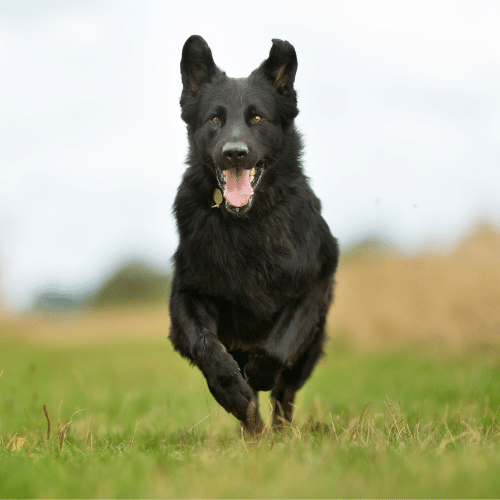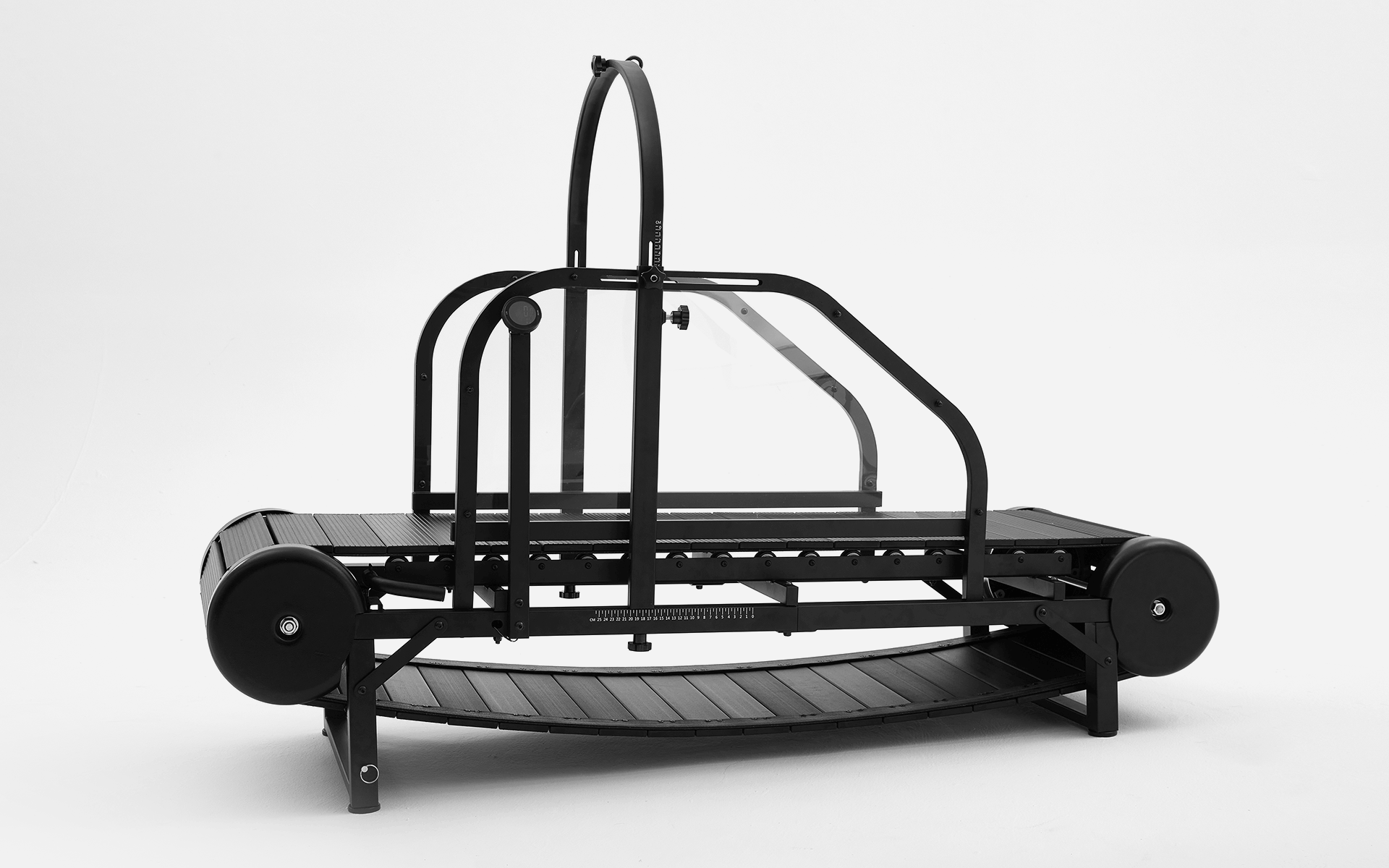German Shepherds, often hailed as one of the most versatile and intelligent dog breeds, have a rich history deeply rooted in various working roles. From herding livestock to serving as loyal police and military companions, these dogs have been bred to possess exceptional physical strength, endurance, and mental acuity. As a result, their training requirements are not only extensive but also crucial for their overall well - being. If you're a German Shepherd owner or considering becoming one, understanding what kind of training these remarkable dogs need is essential. In this blog, we'll explore the specific training demands of German Shepherds and how buying a dog treadmill can be a game - changing addition to their training regimen.

The Physical and Mental Demands of German Shepherds
Physical Attributes and Activity Needs
German Shepherds are large - sized dogs with a muscular build designed for strenuous physical activity. Their strong hindquarters provide them with powerful propulsion, allowing for impressive speed and agility. Historically, they were required to cover long distances while herding, chasing after stray animals, and protecting their flock. Today, even in domestic settings, their bodies are built to move, and they have an inherent need for regular, intense exercise.
On average, a healthy adult German Shepherd needs at least 1 - 2 hours of vigorous physical activity per day. This can include activities such as brisk walks, jogs, hikes, or engaging in canine sports like agility, obedience trials, and tracking. Running, in particular, is an excellent form of exercise for them, as it helps to strengthen their muscles, improve cardiovascular function, and maintain a healthy weight. Without sufficient physical exercise, German Shepherds are at risk of developing obesity, which can lead to a host of health problems, including joint issues, heart disease, and diabetes.
Mental Stimulation Requirements
It's not just physical exercise that German Shepherds crave; they also have a high need for mental stimulation. Their intelligence and eagerness to learn make them quick study, but this also means they can easily become bored if their minds aren't challenged. Boredom in German Shepherds often leads to destructive behaviors, such as chewing on furniture, digging holes in the yard, or excessive barking.
To keep their minds sharp and engaged, German Shepherds benefit from activities that involve problem - solving, learning new commands, and following complex tasks. Training sessions focused on obedience, agility, and scent work not only teach them valuable skills but also provide the mental challenge they need. Additionally, interactive toys and games that require them to think and strategize can help alleviate boredom and keep their minds active.
The Consequences of Inadequate Training

Behavioral Problems
When German Shepherds don't receive the physical and mental training they need, a range of behavioral problems can surface. They may become overly anxious, aggressive, or display dominant behaviors. For example, a lack of exercise can make them restless and prone to lashing out at other animals or people, especially if they feel threatened or confined. Their natural protective instincts, when not properly channeled through training, can also lead to inappropriate guarding behaviors, such as growling or snapping at visitors.
Moreover, without sufficient mental stimulation, German Shepherds may develop compulsive behaviors. They might start chasing their tails obsessively, pacing back and forth, or engaging in other repetitive actions that are difficult to break. These behaviors not only disrupt the peace at home but can also be a sign of underlying stress and frustration.
Health Complications
As mentioned earlier, insufficient physical exercise can lead to obesity in German Shepherds. The extra weight puts excessive stress on their joints, particularly the hips and elbows, increasing the risk of developing conditions like hip dysplasia, a common and painful joint disorder in the breed. Obesity also strains their heart and lungs, reducing their overall endurance and increasing the likelihood of cardiovascular problems.
In addition, a lack of mental stimulation can have an impact on their mental health. German Shepherds that are constantly bored and unchallenged may become depressed or withdrawn. This can affect their appetite, sleep patterns, and overall quality of life.
How Buying Doggo Treadmills Benefits German Shepherd Training

Consistent and Controlled Exercise
One of the most significant advantages of purchasing a dog treadmill for your German Shepherd is the ability to provide consistent exercise, regardless of external factors. Whether it's raining heavily, snowing, or too hot outside, or you simply don't have the time to take your dog for a long walk or run, the treadmill ensures that your German Shepherd still gets the physical activity it needs.
You have full control over the incline, and duration of the workout on the treadmill. This allows you to customize each session according to your dog's fitness level, age, and current physical condition. For younger, more energetic German Shepherds, you can set a steeper incline to provide a more intense workout. For older dogs or those with joint problems, a gentle incline can offer a low - impact exercise that is easier on their joints while still being effective.
Mental Stimulation during Exercise
Running on a dog treadmill isn't just a physical activity; it also provides mental stimulation for German Shepherds. The repetitive motion of running, combined with the need to maintain balance and pace, engages their minds. To further enhance this mental engagement, you can add variety to the treadmill sessions.
For instance, you can change the incline periodically to simulate different terrains, such as hills and flats. This keeps your German Shepherd mentally alert as they have to adapt to the changing conditions. You can also place treats or toys along the sides of the treadmill belt at intervals, encouraging your dog to interact while running. This not only makes the exercise more enjoyable but also challenges their problem - solving skills as they figure out how to reach the rewards.
Injury Prevention
German Shepherds are prone to joint problems, especially if they engage in high - impact activities on hard surfaces. The cushioned surface of a dog treadmill helps to absorb shock, reducing the impact on their joints compared to running on pavement or rough outdoor terrain. This is particularly beneficial during the initial stages of training or for German Shepherds that are recovering from an injury or have pre - existing joint issues.
By using a dog treadmill, you can ensure that your German Shepherd's joints are protected while still getting a good workout. The controlled environment of the treadmill also allows you to monitor your dog's running form closely, making sure they maintain proper posture and technique, which further minimizes the risk of injuries.
Tips for Using a Dog Treadmill for Your German Shepherd

Introducing the Treadmill
Introducing your German Shepherd to the dog running machine should be a gradual process. Start by letting them sniff and explore the machine when it's turned off. This helps them get familiar with the new object and reduces the likelihood of fear or anxiety. Once they seem comfortable, turn on the treadmill at the lowest speed and encourage them to step on using treats and positive reinforcement.
Begin with short sessions, just a few minutes at a time, and gradually increase the duration as your German Shepherd becomes more accustomed to the treadmill. Be patient during this process, as it may take several attempts for your dog to feel confident and relaxed running on the treadmill.
Supervision and Maintenance
Always supervise your German Shepherd while they are on the treadmill. Even with safety features, accidents can still happen, especially if your dog gets distracted or loses its balance. Watch for signs of fatigue, distress, or any unusual behavior, and stop the session immediately if you notice anything concerning.
Regular maintenance of the dog treadmill is also essential. Check the belt regularly for signs of wear and tear, such as fraying or cracks, and lubricate it according to the manufacturer's instructions. Make sure the treadmill is placed on a stable, flat surface to prevent it from moving or tipping during use.
In conclusion, German Shepherds have specific physical and mental training needs that are crucial for their health and happiness. Buying a dog treadmill can be an excellent investment for meeting these needs, providing consistent exercise, mental stimulation, and injury prevention. By following the tips for buying and using a dog treadmill, you can enhance your German Shepherd's training regimen and help them lead a fulfilling, active life.










0 Comments